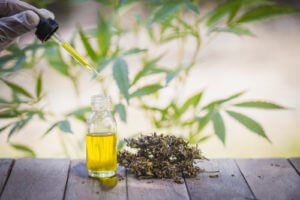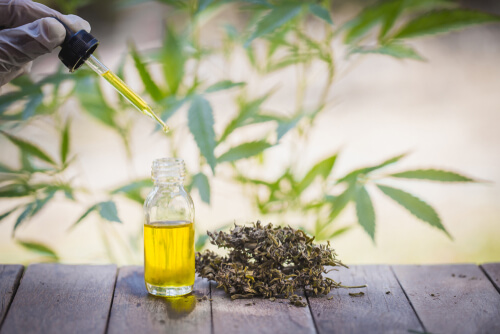
CBD is a cannabis compound that has numerous therapeutic properties. In addition to CBD, cannabis plants have several other therapeutically useful compounds including THC, CBG, and more. Decarboxylation is the major process involved in the making of medicinal and wellness products containing cannabis compounds.
In this article, we cover the important details of decarboxylation and decarboxylated CBD.
What Is Decarboxylation?
Phytocannabinoids are cannabinoids that occur in cannabis plants. They are insoluble in water but dissolves in solvents like oil and alcohol.
Although cannabinoids like CBD and THC are found in high amounts in cannabis plants, they are often present in their acidic forms, CBDA and THCA respectively. The same is the case of many other cannabinoids like CBG.
The process called decarboxylation removes a carboxyl from the acid molecule forming the non-acidic form of the cannabinoid. In the case of CBD, carbon is removed from the carbon chain of CBDA and released in the form of carbon dioxide.
Acidic forms of cannabinoids are inactive, which is why decarboxylation is essential. It has to be noted that decarboxylation does not get rid of acidic cannabinoids completely. If you check the third-party lab report of a CBD product, you can see that acidic cannabinoids are present in it.
Decarboxylation requires heat as well as time. CBD manufacturers use special techniques to decarboxylate CBD. If you are smoking cannabis flower, cannabinoids readily get decarboxylated because of the heat.
What Are The Benefits Of Decarboxylated CBD?
Almost all CBD products that you get in the CBD stores contain activated forms of cannabinoids. That means their manufacturing would have involved the decarboxylation process. To get the most out of cannabinoids, decarboxylation is a necessary step. However, that does not mean non-decarboxylated cannabinoids offer no benefits.
Some studies have suggested that CBDA offers several therapeutic benefits including:
- Prevention of nausea and vomiting
- Antibacterial benefits
- Reduction of pain and inflammation
- Anti-anxiety properties
As decarboxylated and non-decarboxylated forms of CBD are therapeutically useful, manufacturers are offering CBD products having CBD and CBDA in a 1:1 ratio.
How To Decarboxylate CBD?
CBD is decarboxylated by applying heat. Although using a high temperature will speed up the process, a low-temperature range is often preferred for decarboxylation as it helps retain the terpenes as well keep the aroma and flavor of cannabis intact.
If you have raw cannabis flower, you can decarboxylate it on your own at home.

